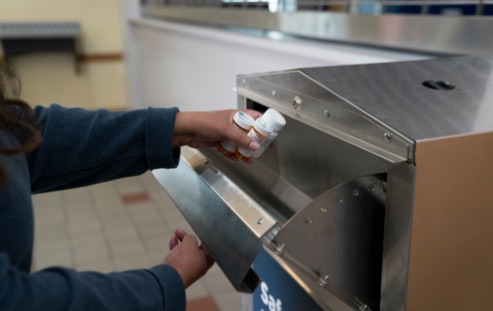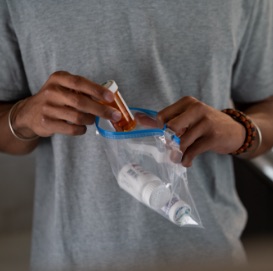SAFE SPACES: OPIOID-PROOFING YOUR HOME

As parents, we take a number of steps to make sure our homes are safe spaces for our loved ones. We baby-proof our homes by covering light sockets and scanning for small objects on the floor. We get rid of that coffee table with the sharp edges (that we’ve bumped our knee on too many times anyways). We store household chemicals like cleaning products where children and pets can’t reach them.
Where we store our medications – and what we do after we no longer need them – is part of making a home safe for all ages. An opioid safe home:
• Only has active medication - old prescriptions are removed immediately
• Has a safe storage plan for active prescriptions
• Knows the amount and location of active prescriptions
STORAGE
When you or your loved ones have an active prescription, make a plan for storing medication from the beginning. Safe storage can prevent misuse, theft or accidental ingestion by children or pets.
Safe storage options can include:
• A prescription locking bag
• Using a locking device on your medicine cabinet
• A locking file cabinet or tackle box
• Storing medicines in a safe like you would other valuables


DISPOSAL
The safest place for medications you are no longer using? Out of your house!
The best option for disposal is taking medications to a Take Back site. This keeps unused medication:
• From being used by people they are not prescribed to
• Away from children and pets who might accidentally eat them
• Out of our water systems (so as to not harm the environment)
Many counties in Washington even have pharmacy disposal and mail in options for those with limited mobility. Ask about disposal options near you when prescribed medication.
If participating in a Take Back program is not an option, dispose of medication in the household garbage. Take the following precautions:
1. Remove the medications from their original containers and mix them with something undesirable, such as used coffee grounds, dirt, or cat litter. This makes the medicine less appealing to children and pets and unrecognizable to someone who might go through the trash looking for medications.
2. Put the mixture in something you can close (e.g., a re-sealable storage bag, or plastic food container) to prevent the drug from leaking or spilling out.
3. Throw the container in the garbage.
4. Scratch out all your personal information on the empty medicine packaging to protect your identity and privacy. Throw the packaging away.
While the Food and Drug Administration also has a list of flushable medications be mindful of the environmental impacts flushed medications have on our water systems.
PAY ATTENTION
When you have an active prescription, pay attention to how that medicine is being used.
• Know how many pills you have available and count them regularly.
• Keep a locking bag in the kitchen instead of the bathroom to prevent loved ones from using medicines in secret.
• Pay attention to whether or not the prescription is actively being used. If it is no longer needed, it’s time for a trip to a Take Back site!
Making a plan for safe storage, disposal and being aware of the medication in your home are all ways to prevent opioid misuse. These strategies also make your home safer for children, pets and the environment. Take a look around - is your home opioid-proof?
SOURCES
https://www.hhs.gov/ash/oah/adolescent-development/substance-use/drugs/opioids/index.html
https://journals.plos.org/plosmedicine/article?id=10.1371/journal.pmed.1002922
https://www.aappublications.org/news/2018/07/16/opioids071618
https://drugfree.org/parent-blog/parents-know-opioids-pain-relievers-prescribed-child/
https://pediatrics.aappublications.org/content/138/1/e20161210
www.Youth.gov; The Power of the Adolescent Brain; https://youtu.be/4S2qgEFEdKU
recent topics

GET HELP
If you or your loved ones are suffering from addiction to opioids, now is the time to get help.
GET HELP






